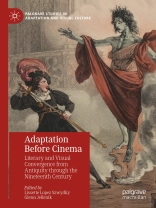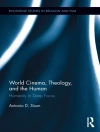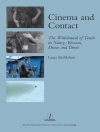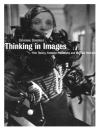Adaptation Before Cinema highlights a range of pre-cinematic media forms, including theater, novelization, painting and illustration, transmedia art, children’s media, and other literary and visual culture. The book expands the primary scholarly audience of adaptation studies from film and media scholars to literary scholars and cultural critics working across a range of historical periods, genres, forms, and media. In doing so, it underscores the creative diversity of cultural adaptation practiced before cinema came to dominate the critical conversation on adaptation. Collectively, the chapters construct critical bridges between literary history and contemporary media studies, foregrounding diverse practices of adaptation and providing a platform for innovative critical approaches to adaptation, appropriation, or transmedia storytelling popular from the Middle Ages through the invention of cinema. At the same time, they illustrate how these forms of adaptation not only influenced the cinematic adaptation industry of the twentieth century but also continue to inform adaptation practices in the twenty-first century transmedia landscape. Written by scholars with expertise in historical, literary, and cultural scholarship ranging from the medieval period through the nineteenth century, the chapters use discourses developed in contemporary adaptation studies to shed new lights on their respective historical fields, authors, and art forms.
Содержание
Introduction “Adaptation’s Past, Adaptation’s Future”, Glenn Jellenik and Lissette Lopez Szwydky.- Part 1: Reframing Adaptation’s Potential, Historically.- Chapter 1 “Of Human Bondage: Recombinant Replications of Supplication and Social Justice since Antiquity”, Mary-Antoinette Smith.- Chapter 2 “Adaptation as the Art Form of Democracy: Romanticism and the Rise of Novelization”, Glenn Jellenik.- Chapter 3 “Poetry after Descartes: Henry More’s Adaptive Poetics”, Melissa Caldwell.- Chapter 4 “History and/as Adaptation: Mac Beth and the Rhizomatic Adaptation of History”, Anja Hartl.- Chapter 5 “Fakespeare; or, Authorship by Any Other Name”, Jim Casey.- Part 2: Transmedia Culture-Texts.- Chapter 6 “Shakespeare’s Adaptations of Fairy Stories”, Valerie Guyant.- Chapter 7 “The Medea Network: Adapting Medea in Eighteenth-Century Theater and Visual Culture”, Katie Noble.- Chapter 8 “The Making of Monsters: Thomas Potter Cooke and the Theatrical Debuts of Frankenstein and The Vampyre in the 1820s”, Eleanor Bryan.- Chapter 9 “Dante Gabriel Rossetti at the Intersection of Painting and Poetry”, Dominique Gracia.- Chapter 10 “Markers of Class: The Antebellum Children’s Book Adaptations of The Lamplighter and Uncle Tom’s Cabin”, Maggie E. Morris Davis.- Chapter 11 “Alice, Animals, and Adaptation: John Tenniel’s Influence on Wonderland and Its Early Adaptation History”, Kristen L. Figgins.- CODA “Transmedia Cultural History in/and the Future of Adaptation Studies”, Lissette Lopez Szwydky.
Об авторе
Lissette Lopez Szwydky is Associate Professor of English at the University of Arkansas, USA, and author of Transmedia Adaptation in the Nineteenth Century (2020). She specializes in nineteenth-century literature and culture, adaptation and transmedia storytelling, and gender studies.
Glenn Jellenik is Associate Professor of English at the University of Central Arkansas, USA. His research focuses on long-eighteenth-century adaptation. His essay, “The Origins of Adaptation, as Such: The Birth of a Simple Abstraction” (Oxford Handbook of Adaptation Studies (2017)), traces the rise of contemporary notions of adaptation to the Romantic period.












